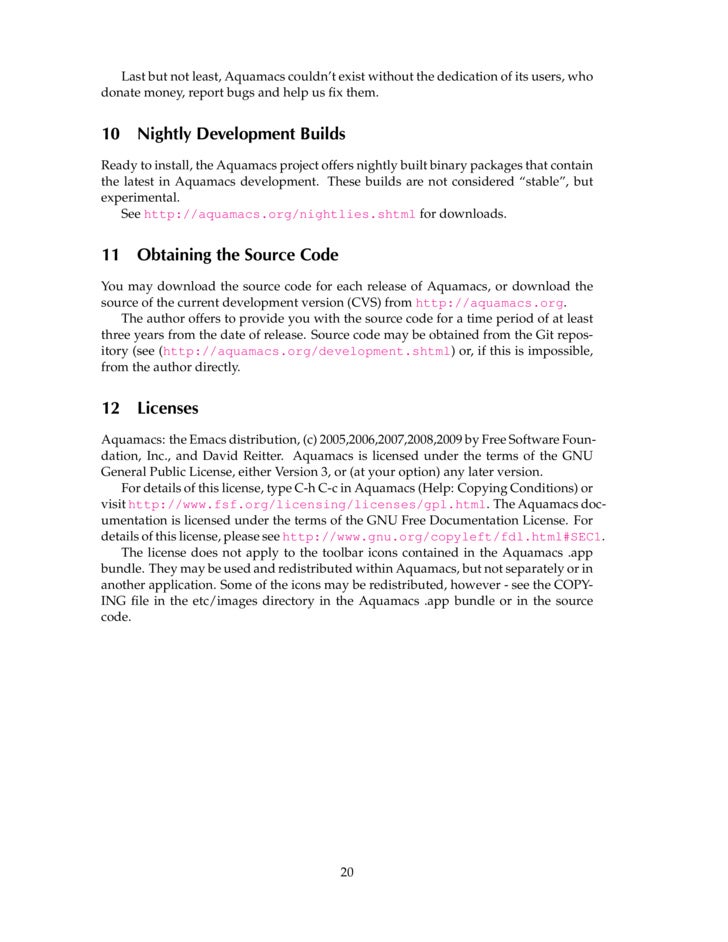

- #TEXT MODE IN AQUAMACS INSTALL#
- #TEXT MODE IN AQUAMACS DRIVER#
- #TEXT MODE IN AQUAMACS CODE#
- #TEXT MODE IN AQUAMACS SERIES#
and you won’t have to open an external R console: everything can be done from within Emacs.Ī nice overview of Emacs capabilities has been given by Dirk Eddelbuettel in his answer to the Now, you will have access to a lot of R-specific functionalities, including syntax highlighting, auto-indentation of code, line-by-line evaluation, etc. There is more to see with the ESS package. It offers a lot of functionalities and will be suitable for the basic copy/paste activity described above. Emacs is a powerful tool (it’s difficult to say it is just an editor) for programmers and users dealing with text file.
#TEXT MODE IN AQUAMACS INSTALL#
Well, install Emacs if it is not already present on your system, and you’re almost done. So, basically, let’s keep it simple and just use an R-aware text editor.
#TEXT MODE IN AQUAMACS SERIES#
However, R is a statistical language and offers a lot more interactivity, though that might hardly be reduced in a series of click and go actions. That may appear a crude way of working with R, especially for those used to statistical packages featuring a spreadsheet-view of the data and a lot of menus and buttons with which the user can interact.
#TEXT MODE IN AQUAMACS CODE#
This allows to build efficient R code in an incremental fashion. A good editor might even provide syntax highlighting, parenthesis matching, and a way to send a selected portion of code to R directly. To do this in R, type:Ĩ) That’s it.A simple yet efficient way to work with R consists in writing R code with your favorite text editor and sending it to the R console.
#TEXT MODE IN AQUAMACS DRIVER#
To allow this R session to be linked to your *.R script, use this command in the remote R session:Ħ) Now you should be able to send code from your *.R script to the remote R session as you normally would (e.g., C-c C-j).ħ) Last, you need to change the options in your remote R session to graph using X11 rather than whatever default driver is being used. Now open up R as you usually would on that server. Ssh -XC You should now be logged into the server, just as you wold be if you’d used terminal rather than emacs. When doing this, you need to make sure to specify two important ssh options: compression (which compress data coming to you, making the connection seem *much* faster) and X11 forwarding (which allows you to use interactive graphing features via X11). Here’ how:ġ) Open up your *.R script you’d like to useĢ) Open a shell inside Emacs by typing “M-x shell”ģ) From within this shell, ssh to the server you want to use. It can be very helpful to run an interactive session of R on a remote server, which may have faster CPUs and more memory than the computer you’re on, or may have datasets on it you don’t have access to otherwise. USING EMACS TO LOG IN TO A REMOTE SERVER & RUN R INTERACTIVELY What I do is to set “options(device=”quartz”) within my Rprofile.site file. If you really want to use X11 to write graphics, you can use x11(type="Xlib")' for each new graph. Now your null graphics device is quartz and it should all work out. To change this, type in R: “options(device=”quartz”)”. Aquamacs has X11 as the default (null) graphics device. Just one more issue: graphing will crash (something to do with the new R and X11). A new window will open up that is the R session.Ĥ) That’s almost it. Here’s where you tell it you want to run 64-bit R.

Aquamacs will ask you for “Starting Args”. Emacs has a bit of a learning curve, but you’ll begin loving its capabilities as an aid to programming very soon.ģ) To start 64-bit R from within aquamacs hit -u then -x then “R” then. I highly recommend checking out this page,, and downloading the ESS reference card therein if you are new. Download Aquamacs from and install it.Ģ) Now any file with an “.R” extension that is opened with aquamacs will automatically have syntax highlighting AND will allow you to start 64-bit R. No need to separately download ESS (emacs speaks statistics) or mess with the. 1) Aquamacs is terrific because it comes bundled with about everything you need to start using R with it.


 0 kommentar(er)
0 kommentar(er)
